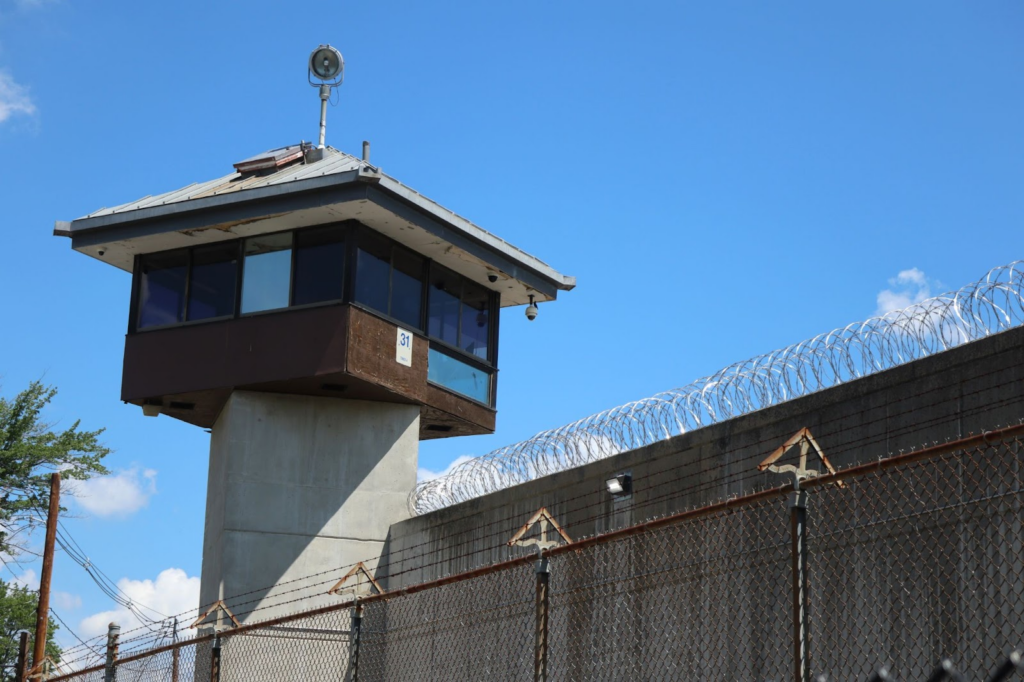When you’re facing time behind bars, it is imperative that you gain a clear understanding of what lies ahead. Jails and prisons both house inmates guilty of crimes. However, these institutions feature a number of differences that define each type of facility. In the following article, you will learn about the nature, structure and common traits of jails and prisons.
Jail Definition
Jails are institutions used for the confinement of individuals awaiting trial, and those sentenced to low level crimes, like misdemeanors. In terms of the level of incarceration, a jail falls between a local police station lockup on one end, and a prison on the other. Most jail sentences are one year or less, while prison sentences exceed one year.
Jails differ from prisons in a number of ways, including the type of inmates incarcerated, the severity of crimes committed, locations, available resources, level of oversight, jurisdiction, sentence duration, and other areas.
Jails operate at the state and local levels (city and county), while certain departments of the state or federal governments, respectively, manage prisons. In most cases, local law enforcement authorities oversee the operation of jails. This includes the county sheriff, police chief, or a county or city administrator and their respective agents.
The government also extends a limited number of authorizations or partnerships to privately owned jails. While the business manages the day-to-day oversight of these institutions, they must still abide by the laws, codes, and regulations for correctional facilities in their jurisdiction.
Jails manage a number of activities and inmate scenarios, including:
- Temporary detainment of juveniles pending transfer to juvenile facilities
- Holding individuals for protective custody, for contempt, for the military and for the courts as witnesses
- Transferring inmates to federal, state or other authorities
- Temporarily housing higher level inmates because of overcrowding in certain prisons
- Processing and releasing inmates upon completion of their sentence
- Holding mentally ill persons pending their transfer to an appropriate mental health facility.
- Readmittance of parole or probation violators.
Rehabilitative and Vocational Opportunities
Another important aspect of jails is that they offer their inmates various work release programs and boot camps, along with substance abuse, educational and vocational opportunities. These programs afford inmates a greater level of freedom and access. This decreases the individual’s overall stress while helping them prepare for life on the outside.
For jail employees, these inmate activities mean fewer inmates packed together, leading to a decreased level of tension and conflict. Also, when inmates engage in productive activities, they are less likely to get into trouble.
Common Issues
Common inmate complaints about jails often revolve around quality of life, inconsistency, and the quality and availability of resources. Local jails frequently suffer from budgetary restrictions, given the constantly changing level of public and legislative support for these institutions.
These limitations can negatively impact the availability of guards and other jail staff. Additionally, the level of cleanliness, the quantity and quality of food, and the available resources for fitness, recreational, learning and vocational activities often suffers for lack of funds.
Jail inmates also frequently complain about the shifting nature of life inside. Unlike prisons, where inmates often remain for several years, jail rosters constantly change. This continual movement of inmates can affect the sleep patterns, mental health and social stability of many individuals trying to establish consistency in their schedule and habits.
Prison Definition
Prisons are institutions built and managed for the confinement of lawbreakers guilty of more serious crimes, namely felonies. Sentences begin at more than one year and extend to multiple life sentences. Depending on the jurisdiction, a state Department of Corrections or the Federal Bureau of Prisons (BOP), manages the prison.
The U.S. Department of Justice lists four major purposes for prisons, including retribution, incapacitation, deterrence and rehabilitation.
- Retribution: punishment for crimes committed against society
- Incapacitation: the removal of criminals from society to keep them from committing new crimes
- Deterrence: the hope that such incarceration will dissuade other individuals in society from committing crimes
- Rehabilitation: activities designed to transform lawbreakers into safe, functional and productive members of society
Prisons manage a number of activities, including:
- Detainment and oversight of inmates
- Temporary detainment for inmates nearing release or awaiting transfer to prisons of either lesser or greater levels of security
- Detainment of prisoners awaiting capital punishment
- Offering prisoners a number of work options like laundry, baking, cooking, farming, community work, repair and maintenance and more
- Providing prisoners with several options for enrichment activities and rehabilitative programs, including art, reading, educational training, gardening, fitness and sports, skills training and technology courses
- Provide counseling and religious support
While often more consistent than life in jail, given the longevity of most inmates, prison life is fraught with a number of issues. The culture is often tribal in nature, with inmates dividing themselves into factions based on various traits and loyalties.
Individual cells are usually small, with two inmates per cell. Anxiety, violence, manipulation and extortion are all common traits within prisons, with the occurrence of each more common at higher security facilities.

State Prisons
State prisons are state correctional facilities that house inmates guilty of state crimes, typically under management by the state’s Department of Corrections. States divide prisons into three levels of security, maximum, medium and minimum security. Some common offenses of state prisoners include:
- Murder
- Rape
- Sexual Assault
- Mayhem
- Bank Robbery
- Controlled Substance Violations
- Weapons Violations
State prisons often carry a lower level of security than federal prisons but frequently have more violent criminals, often making these institutions less safe than federal facilities. There are more state than federal prisons in the U.S. Differing again from federal institutions, state prisons assign their population regular duties. Finally, state prison terms, on average, are longer than federal prison terms.
Federal Prison
Federal prisons are federal correctional institutions charged with housing inmates guilty of federal crimes, or felonies. The Federal Bureau of Prisons (BOP), an agency of the U.S. Department of Justice, manages all federal correctional and penal institutions. SImilar to jails and state prisons, federal prisons have a number of privately owned and operated locations throughout the country.
Unlike state prisons, which have three levels of security, federal prisons have five distinct levels, including:
- minimum security
- low security, including federal prison camps
- medium security
- high security
- administrative security
Crimes often committed by federal prisoners include:
- Racketeering
- Drug Trafficking
- Weapons Charges
- Computer Crimes
- Certain sex offenses (including child pornography)
- Various white-collar crimes (embezzlement, money laundering, counterfeit and identity theft)
- immigration crimes
- Treason
- Piracy
Similarities Between State and Federal Prisons
Even though several differences exist between them, state and federal prisons share many similarities, including:
- Government entities oversee both state and federal prisons.
- There exists a limited number of private prisons under both the federal and state systems, respectively.
- Both keep a strict set of rules that inmates must follow at all times.
- Inmate privileges are largely the same for both types of prisons.
- Disciplinary procedures are similar between the state and federal levels.
- Prison inmates may not leave the facility without permission.
- Taxpayers fund both types of prisons.
- State and federal governments organize their prisons into various levels of security.
- Federal and state institutions keep separate spaces for men and women.
- Both federal and state institutions offer rehabilitative programs to inmates.

Low-Security Prisons vs Medium and High-Security Prisons
While prisons at every security level exist to house convicted inmates, each security level has certain unique traits.
Minimum security prisons offer inmates more privileges and a minor level of restrictions when compared to other prisons. Many of these institutions oversee a number of work programs where individuals can provide a service to the community and build skills along the way. Minimum security prisons also have some of the lowest inmate to staff ratios among all correctional facilities.
Low-security prisons, which house approximately 38% of the federal inmate population, generally offer dormitory-style housing, double-fenced perimeters, a slightly higher inmate to staff ratio than that of minimum security prisons and electronic monitoring systems. Violent incidents are not common in low-security facilities. For low-security confinement, an inmate must have less than 20 years remaining on his or her sentence.
Medium-security prisons, also known as Federal Correctional Institutions, or FCIs, house roughly 29% of the federal inmate population. They feature double-fenced perimeters, securable cells, electronic and video monitoring and an even higher inmate to staff ratio. Inmates must have less than 30 years remaining to qualify for minimum-security. Violence is more prevalent at this level than with low-security.
High security prisons, also known as United States Penitentiaries (USPs), house 12% of the prison population. These are high-security facilities with single and multi-person cells, reinforced fences or solid walls, and multiple towers or other advantageous locations for guards to shoot from. Staff members severely restrict movement within the compound and the highest inmate to staff ratio exists in these facilities. Violence is rampant, with physical altercations, racially-charged conflicts, and gang-motivated crimes occurring frequently.
Administrative-security prisons house individuals from all security levels, often providing detention for pre-trial inmates. Many of these institutions provide advanced medical care for inmates dealing with chronic health problems and special medical needs. These prisons are a common stop, or holding position, for inmates on their way from one facility to another. Administrative-security prisons also house certain vulnerable inmates in special protective custody cell blocks.
The Importance of Partnering with a Lawyer
If you or a loved one are facing prison time, contact a lawyer immediately. Your attorney will do everything in their power to get your charges dismissed, or at least lower your sentence. Don’t hesitate. Your lawyer is the best chance you have of gaining back your freedom.

Ben has vast experience in defending criminal cases ranging from DWIs to assault, drug possession, and many more. He has countless criminal charges dismissed and pled down. Among many other awards, one of the Top 10 Criminal Defense Attorneys in Texas and winner of Top 40 under 40.
Ben has vast experience in defending criminal cases ranging from DWIs to assault, drug possession, and many more. He has countless criminal charges dismissed and pled down. Among many other awards, one of the Top 10 Criminal Defense Attorneys in Texas and winner of Top 40 under 40.